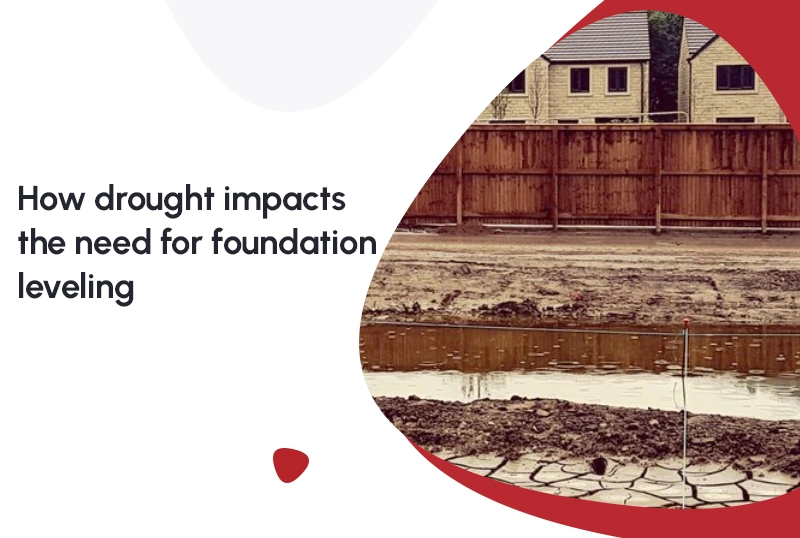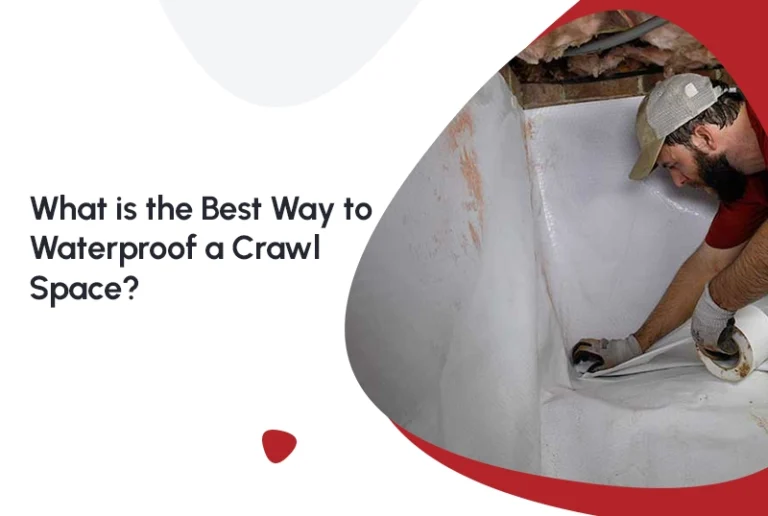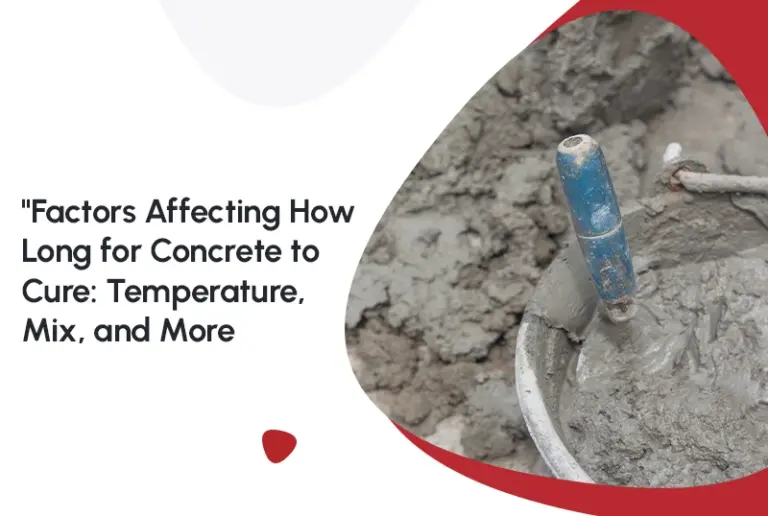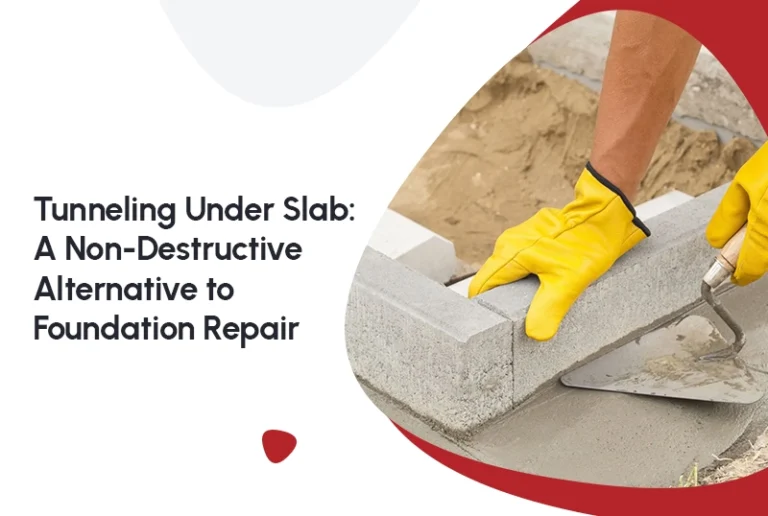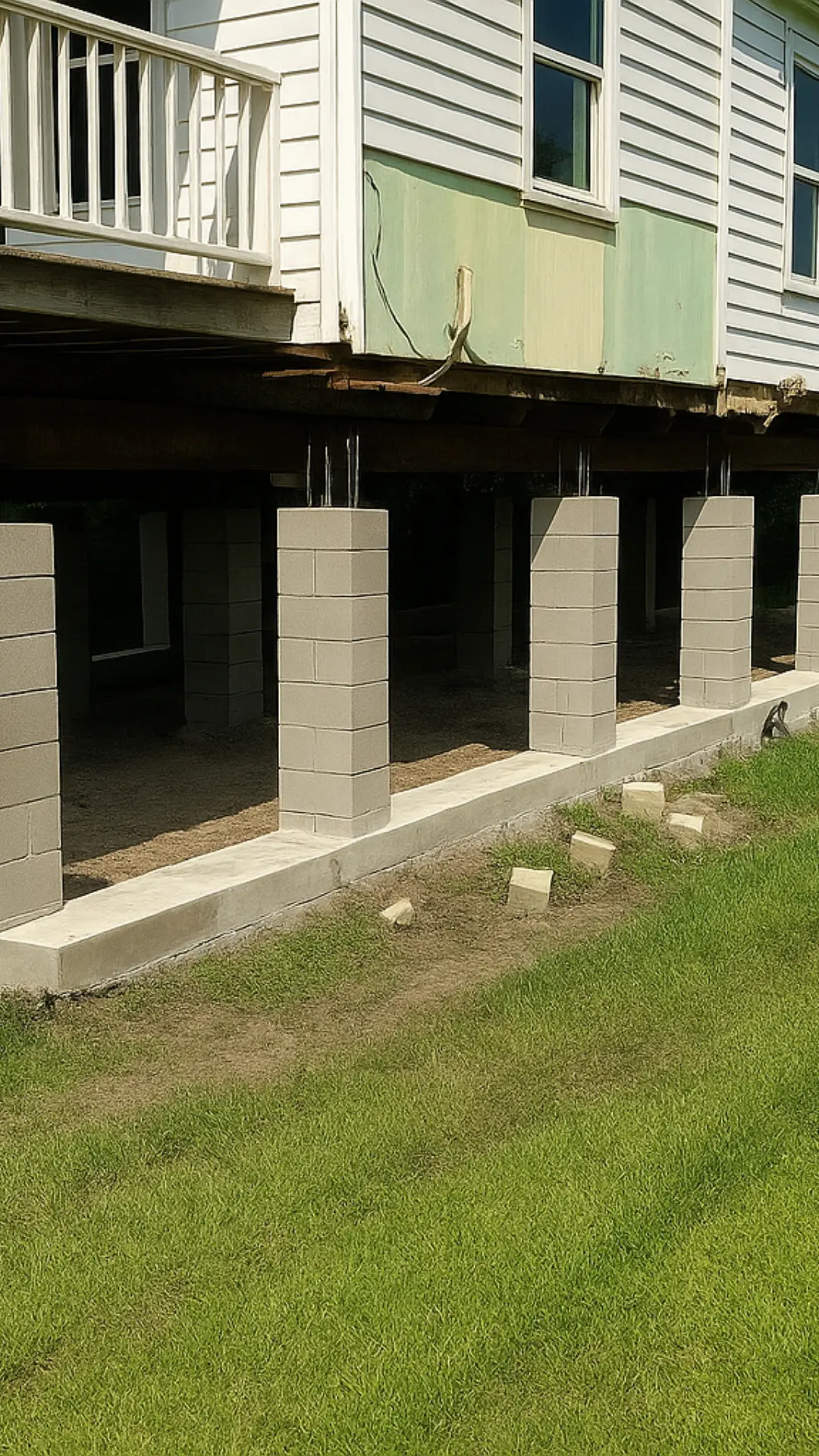When you picture drought, you likely think of cracked earth, wilted grass, and parched landscapes. But here’s what many homeowners don’t realize: drought doesn’t just hurt the garden, it can quietly undermine your home’s foundation. Over time, the ground beneath your house can shrink, shift, and leave gaps that cause your structure to settle unevenly. That’s where foundation leveling comes into play.
In this guide, we’ll explore how dry spells lead to foundation movement, why leveling becomes essential, and how you can address the issue before cracks, sticking doors, and sagging floors show up. We’ll cover what foundation leveling is, when it’s needed, what it costs, and how you can protect your home with smart maintenance.
Why Soil Moisture Matters for Your Home’s Foundation
Your home isn’t built on concrete alone, it sits on soil. And soil behaves very differently when it’s dry compared to when it’s moist. In many regions especially parts of Texas with clay-rich soil, the contraction of soil during a drought can create spaces beneath the foundation, reducing support. That leads to uneven settlement.
In fact, shrink‑swell soils are so active that the American Society of Civil Engineers estimates about one in four homes experience damage caused by them.
When the soil surrounding your foundation dries out due to prolonged drought conditions, it can lead to two significant issues:
Loss of Support Beneath the Foundation
As the soil shrinks and pulls away from the foundation, the support that once held the foundation in place is compromised. This creates gaps, leaving the foundation slab or piers without the necessary ground stability to remain level. Without adequate support, the structure becomes prone to shifting and settling.
Uneven Settlement Across the Home
As soil movement causes one area of the foundation to lose support, certain parts of the house may begin to sink while others remain stable. This uneven settling can cause floors to slope, walls to crack, and doors or windows to misalign. Over time, this shifting can result in serious structural damage if not addressed promptly.
As the EPA notes, between 10 % and 70 % of U.S. land area has been classified as abnormally dry at any one time between 2000 and 2023, highlighting just how widespread moisture‐loss conditions are.
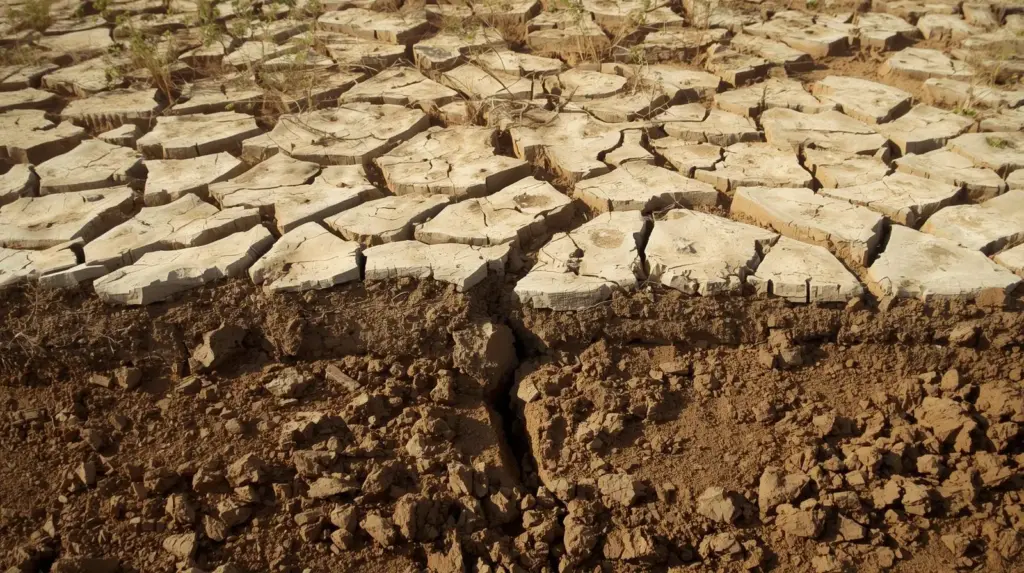
How Drought Leads to the Need for Foundation Leveling
So how exactly does drought push your home toward requiring foundation leveling? Here’s the step‑by‑step:
1. Dry soil shrinks
Especially in clay soils, a lack of moisture causes shrinkage. Trees and landscaping may draw even more water from the soil.
2. Loss of contact under foundation
As soil pulls away, your foundation may no longer sit solidly against the ground. In slab homes that can lead to voids under the concrete; in pier‑and‑beam homes it means piers lose lateral support.
3. Uneven settlement
Some portions of the house lose support faster than others. One corner may drop, the floor may slope, or doors may begin to stick.
4. Foundation leveling becomes necessary
To restore a level home, foundation leveling is needed—lifting and stabilizing the structure so load is distributed evenly again.
5. Post‑drought rebound creates further stress
When rain returns, soil rapidly expands back. If voids or movement already exist, the rebound can cause new movement or cracking.
In short: drought creates the conditions for structural shifting; foundation leveling corrects the damage and restores stability.
Dry soil conditions are monitored nationally, and soil‑moisture data published by federal agencies show significant contraction in the top meter of soil during droughts.
Signs Your Home May Require Foundation Leveling
Here are key warning signs to watch for:
- Floors that slope or feel uneven
- Doors and windows that suddenly stick or won’t latch
- Cracks that appear in interior walls or exterior brickwork
- Gaps between baseboards and flooring
- Exterior step down from foundation perimeter
- Crawl space floors or subfloors that bounce or sag
If you notice one or more of these symptoms after a dry spell, call for an inspection, especially if you live in areas like Humble, Texas. Early action prevents larger, more expensive repairs later.

What Is Foundation Leveling?
Foundation leveling is the process of raising, stabilizing, and restoring the structural integrity of a home’s foundation so that it sits level and evenly supported again. It may involve:
- Installing support piers (concrete, steel, helical)
- Under‑slab tunneling to access supports beneath the home
- Adjusting beams or joists for pier‑and‑beam homes
- Stabilizing crawl space supports
In fact, if you live in Humble, you may require specialized services such as foundation repair Humble, house leveling Humble, or pier and beam foundation repair Humble, depending on your home’s foundation type.
Why Drought‑Affected Areas Need More Frequent Leveling
Homes in drought‑prone regions face added risk because:
- Soil moisture fluctuates more severely
- Clay soil expands and contracts drastically
- Landscaping practices may drain more water from foundations
- Rainfall return often causes sudden soil expansion
That means what might have been a minor issue five years ago becomes accelerated under repeated drought conditions. This makes periodic inspections and preventive leveling more important.
Cost of Foundation Leveling: What Homeowners Should Know
Costs can vary widely based on foundation type, home size, soil profile, and severity of settlement. On average:
- Minor leveling (partial house lift): $3,000 – $8,000
- Moderate settlement correction: $8,000 – $15,000
- Extensive work (whole house, severe settlement): $15,000 – $30,000+
Several factors increase cost: deeper piers required, severe soil movement, crawl space access, plumbing or electrical relocation.
DIY vs Professional: Is Concrete Leveling Something You Can Do Yourself?
Professional leveling typically involves:
- Excavating access points or tunneling under slab
- Installing support piers or hydraulic jacks through pier and beam foundation repair Humble
- Raising and stabilizing the structure to level nylon or lead bears
- Adjusting interior framing or subfloor as needed
- Backfilling and restoring access points
If your problem is minor, just a few inches of slab drop on a driveway or patio, you might attempt a DIY fix like polyurethane foam injection or mud jacking. But when foundation settlement affects the structure of your home, DIY is risky. The process must account for load distribution, soil behavior, and plumbing/logistics. Mistakes can lead to increased damage.
How Long Does Concrete/Foundation Leveling Last?
When foundation leveling is done correctly, it can provide long-lasting results, often lasting several decades. However, the durability of the repair depends on several crucial factors:
Quality of Soil Remediation
The success of the leveling process heavily depends on how well the soil underneath the foundation is addressed. If the soil is not properly stabilized or if underlying issues like expansive clay or poor compaction aren’t corrected, the foundation may continue to shift over time, leading to future problems.
Stability of Moisture Levels Around the Foundation
Moisture levels in the soil surrounding the foundation play a significant role in its long-term stability. Consistent moisture, whether from rain or irrigation, is essential to prevent soil shrinkage or expansion. Fluctuations due to droughts or excessive watering can cause the soil to move unpredictably, potentially undoing the effects of the leveling.
Presence of Ongoing Plumbing Leaks or Drainage Issues
Plumbing leaks or poor drainage systems around the foundation can exacerbate foundation movement. Leaks saturate the soil and cause it to shift, while improper drainage can pool water around the foundation, leading to instability. Without addressing these issues, any foundation leveling performed may only serve as a temporary fix.
If the root causes, such as soil movement from drought or inadequate drainage, are not properly managed, foundation leveling may not be permanent. Without long-term solutions to these underlying problems, the foundation could eventually shift again, requiring further intervention.m fix.
Preventive Maintenance: Minimizing Drought Impact on Your Foundation
Since drought is often the catalyst for foundation issues, prevention helps. Some best practices:
- Maintain consistent moisture around your foundation (especially in clay soils)
- Water landscaping responsibly, but avoid over‑watering near crawl spaces
- Ensure proper grading away from foundation and clean gutters/downspouts
- Inspect and repair cracks early
- Monitor large trees near your home — their roots may extract water and dry soil quickly
By controlling external conditions, you reduce settlement risk and foundation leveling needs.
Why Partner With Professionals Like FNF Foundation
Whether your home needs yard drainage, crawl space remediation, or a full lift and level, a dedicated foundation professional ensures correct diagnosis and repair. Services like foundation repair Humble, house leveling Humble, and pier and beam foundation repair Humble are part of a comprehensive strategy, not just a temporary fix. Choosing experienced local professionals familiar with Texas clay soils and dry–wet cycles ensures better long‑term outcomes.
Final Thoughts
If you’ve experienced drought or persistent dry conditions, the risk to your foundation grows silently. Soil that shifts away from your structure reduces support, creates uneven settlement, and can leave you facing major repair bills down the road. Foundation leveling is the proven solution to restore balance and security under your home.
But it’s not just about fixing the damage—it’s about understanding why it occurred and protecting your home against future cycles of dry and wet seasons. Partnering with an experienced company like FNF Foundation ensures you get both: expert leveling plus long‑term stability.
Don’t wait for new cracks or a shocking shift to act. Get ahead of your foundation’s needs now. Schedule a professional inspection, stay aware of drought risks, maintain soil and drainage properly—and sleep well knowing your home stands firm.
Frequently Asked Questions (FAQs)
How much does it cost to get your foundation leveled?
As outlined above, minor leveling may run $3,000–$8,000; moderate work $8,000–$15,000; extensive projects $15,000–$30,000+. Soil conditions, foundation type, and access affect cost.
How do I level my foundation?
Leveling involves installing support systems under the home (piers or jacks), raising the structure to correct elevation, adjusting framing or floors, and then backfilling or restoring access points. It begins with a detailed inspection and elevation report.
Can I do concrete leveling myself?
For small, non-structural drops (driveway, patio), DIY methods like polyurethane foam injection or mudjacking may work. For structural settlement of a home’s foundation, DIY is not recommended due to complexity, safety, and risk of improper support.
How long does concrete/foundation leveling last?
When done correctly and root causes addressed (drainage, soil moisture, plumbing), leveling can last decades. Without addressing underlying issues, results may degrade in 5–10 years.
Does insurance cover concrete lifting or leveling?
In most cases, no. Insurance generally excludes gradual soil movement or settlement from drought. Coverage may apply in rare cases where a covered cause triggered damage, but you should assume it is your financial responsibility.
Is it worth leveling an old house?
Yes. While older homes often present additional challenges (aging materials, mapping issues), investing in leveling restores structural integrity, improves resale value, and prevents more serious failures later. It’s worth the cost compared to replacing major framing or moving.
